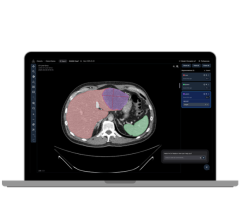February 10, 2011 – Pre-clinical studies have demonstrated that improved drug uptake in tumors can be visualized and measured in real time using image-guided drug delivery. The research, conducted jointly by Philips and the Eindhoven University of Technology (TU/e), Eindhoven, the Netherlands, shows that the measurements may give an indication of whether chemotherapy was sufficient, or whether more treatment is needed.
This proof of concept will appear in the Journal of Controlled Release in February.
Cancer chemotherapy treatment is used to kill tumor cells and is more effective at higher doses. However, the applicable dosage levels are limited by potentially severe adverse effects to the rest of the body. In pre-clinical studies using their local drug delivery proof-of-concept system designed for the treatment of certain types of tumors, researchers achieved an increased chemotherapy drug dose at the tumor site.
Some tumors contain sections poorly supplied with blood, meaning that chemotherapy drugs are not taken up evenly in the tumor. As a result, some regions receive sub-optimal doses and are therefore not effectively treated with chemotherapy. Methods for visualizing and measuring drug uptake in the tumor at time of delivery were demonstrated in the pre-clinical investigations. Such information may give an indication directly after the treatment if drug uptake was sufficient. Based on this additional information, tumors that did not receive a sufficient drug dose due to their morphology may be candidates to receive an alternative therapy.
The research was performed under the leadership of Holger Grüll, professor in the biomedical NMR research group at the Eindhoven University of Technology. He was also responsible for research into molecular imaging and therapy at Philips Research.
Grüll and his team used a combination of MRI and ultrasound technologies, along with tiny temperature-sensitive, drug-carrying particles (called liposomes) for local chemotherapy drug delivery. The liposomes, injected into the bloodstream, transport the drug around the body and to the tumor. The tumor is mildly heated using a focused ultrasound beam causing the liposomes in the tumor to release their drug payload.
Simultaneous MR imaging is used to locate the tumor, measure local tissue temperature and guide the ultrasound heating. In order to monitor the amount of drug released, the liposomes also contain a clinically used MRI contrast agent, which is co-released on heating. The release of the contrast agent can be monitored with MRI, allowing correlated measurements and visualizations of drug uptake in the tumor and surrounding tissue.
For more information: www.philips.com


 December 15, 2025
December 15, 2025 









